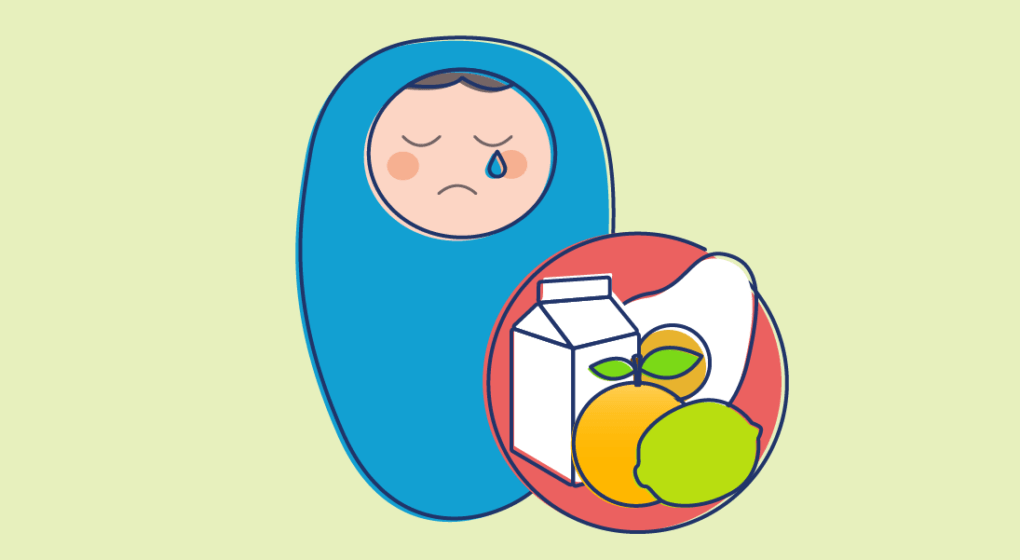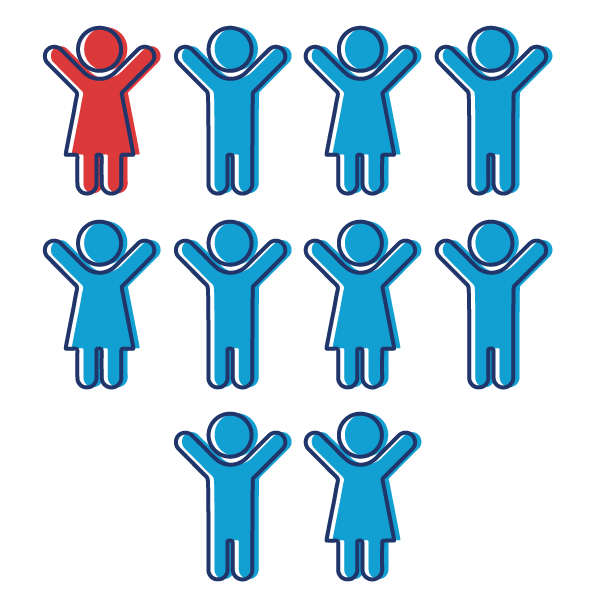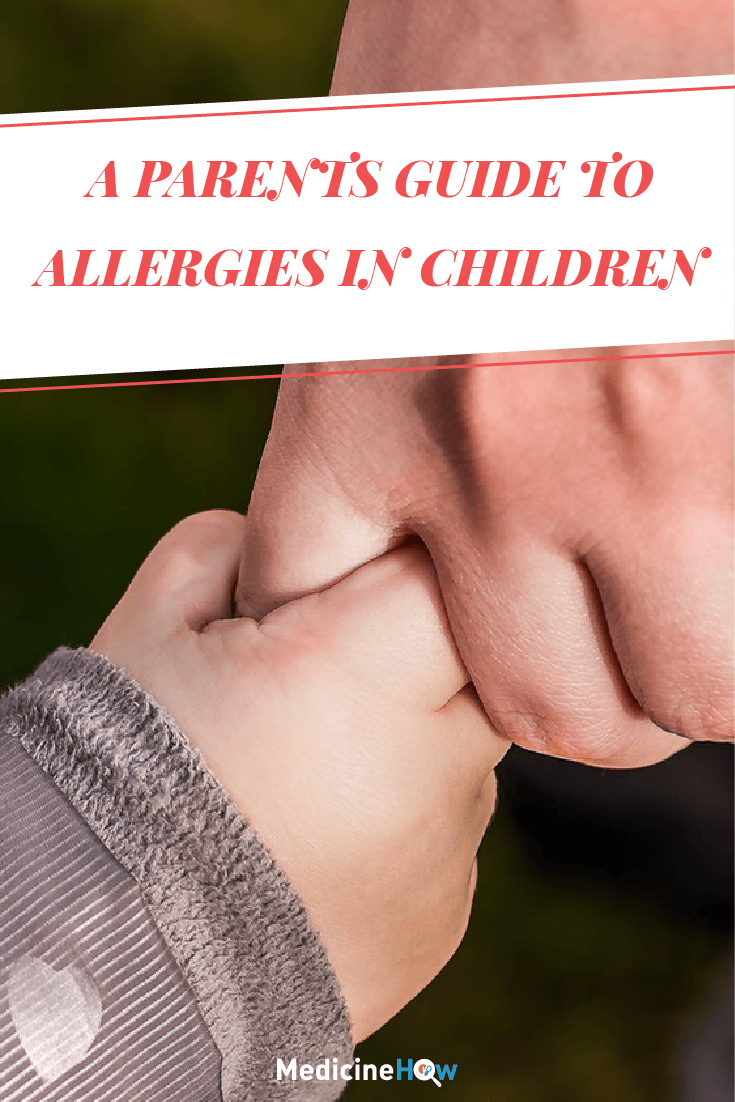
Allergies in children are very common, so it’s important to be aware of the signs so that you can take action and help your child to cope. There are many different symptoms and types of allergies, but we’re going to have a look at each of the most common, and what you can do about them.
What are allergies?
An allergy is a reaction that occurs when the immune system in the body is extra sensitive to certain proteins in the environment around us, called allergens.
Usually, the immune system plays an important role in your body to keep the “bad” things out. For example, when you get a virus that causes a cold or the flu, it’s up to your immune system to recognize the virus and attack it so that the symptoms of the cold or flu go away.
For someone with an allergy, the immune system recognizes a protein that normally exists in our everyday environment as “bad” and overreacts to it. The body starts to produces IgE antibodies as a response, which are natural chemical that cause inflammation in the body. As a result, people may start to notice symptoms of hay fever, eczema, hives or bowel problems.
How common are allergies in children?

Allergies are very common in infants and young children. In fact about 1 in 10 children is affected by some type of allergy, and in some areas as many as 1 in 3 can be affected.
Fortunately, the allergies tend to disappear or become less severe as children grow older, although some people remain allergic to some allergens for their lifetime.
How to recognize allergies in a baby or young child
One of the most difficult thing about being a new parent is understanding what your young child is trying to tell you through their behaviour, rather than their words.
There are many different signs and symptoms of allergies in children and each one of them may have a different reaction. Sometimes the reaction can also be delayed so that the signs do not show up until several hours or days after being exposed to the allergen.
Signs of allergies in the digestive system:

Nausea
Vomiting or spitting up food
Crying
Pulling away from breast feeding
Stomach pain
Diarrhoea
Poor appetite
- Slow weight gain
Signs of allergies in the respiratory system:
Runny nose
Sneezing
Wheezing
Asthma
Recurrent bronchitis or croup
Persistent cough
- Tightness in the throat
Signs of allergies on the skin:
Rashes
Eczema
Hives
- Pale and sweaty
Behavioral signs of allergies:
Disturbed sleep
Irritability
- Crying fits
What causes allergies?
Many allergens that cause an allergic reaction in babies and children naturally occur food or the air.
For example, foods that commonly cause an allergic reaction with mainly gastrointestinal symptoms in children include:
Milk and dairy product
Eggs
Peanuts, tree nuts and other nuts
Sesame
Oranges
Soya beans
Chocolate
Tomatoes
Fish
Wheat
Additives (e.g. colourings, flavorings, preservatives)
Allergens in the air can cause an allergic reaction of the respiratory in some children. Examples of these allergens include:
Dust mites
Pollens
Animal hair
- Mould
Food Allergies When Introducing Solid Foods
It is best to only breastfeed your infant up until the age of at least six months. From this point, solid foods can gradually be introduced. If breastfeeding is not an option, it is important to choose a suitable type of formula milk, as some can make symptoms of allergies worse. If using a bottle to feed, it is best to boil bottles to sterilize them before use, rather than using a chemical agent that may cause a reaction.
When possible, introducing each new food to your child individually is a good way for you to understand if there is a particular food that causes them to have a reaction.

For example, you might begin by giving your child a little taste of stewed apple. If they seem fine the next day, they can try eating a larger quantity of the food. It is best to wait several days before introducing the next few food, as the symptoms an allergic reaction can take a few hours or days to show up.
If you start feeding your child too many new foods at once, it will be more difficult to work out which one is causing a reaction.
There are some foods that are more likely to cause problems in young children. It is useful to know what these are so that you can pay closer attention to your child after they have eaten them for the first time. Common food allergies in children include:
Milk and dairy product
Eggs
Citrus fruits
Peanuts
These foods that often cause allergies are not usually given to young children until they are at least 6-9 months old.
Respiratory System Allergy Management
Many young children are allergic to dust mites and animal hair that can be present in the daily living environment at home, particularly for families who have pets. It might be worth considering keeping pets outside to reduce this problem.
It is also a good idea to keep the house as clean as possible by vacuuming regularly and airing the house and bedding each day. This can help to reduce the humidity and dampness inside the house that can lead to the growth of mould, which can cause allergies.
Finally, it is also important avoid smoking inside the house and use household sprays, such as fly spray, disinfectants and perfumes, sparingly.
Many children who have allergies with symptoms of the respiratory system are also affected by asthma. If their symptoms do not go away, it is a good idea to talk to your doctor about what can be done.
Managing Allergic Skin Reactions
For young infants that have eczema or other allergic skin reactions, breastfeeding can often help to reduce the symptoms.
Other things that can help to reduce allergic skin reactions include:

Dressing your child in cotton clothing and nappies
Avoiding strong soap and detergent products
Many children who have allergic skin reactions are also affected by eczema. If their symptoms do not go away, it is a good idea to talk to your doctor or pharmacist about what can be done.
What to do about allergies at childcare or school?
If your child has an allergy, it is important to make sure that anyone who looks after your child knows about it, including their childcare center or school. It’s important to have a plan in place that anyone can follow, just in case your child does have an allergic reaction.
Access to your child’s medication for a severe allergic reaction or anaphylaxis (e.g. epinephrine or adrenaline) should be available at their school in case of an emergency.
Every school has a different approach to dealing with allergies in their students. They may need to reconsider having class pets if they make allergies worse, or sit children who are affected by respiratory symptoms away from any blackboard that involve chalk dust that can irritate the airways. Additionally, some schools may go so far to restrict foods that students are severely allergic to, such as peanuts. Many schools are now “nut free” for this reason.
If you’re concerned about the environment at school making your child’s allergic symptoms worse, the best thing that you can do is to talk to the school about the situation and see what they can do.
Other Frequently Asked Questions (FAQ)
- Are allergies in children contagious?
No allergies are not contagious and can not be spread from one child to another.
- Are allergies inherited from the parents?
No, allergies cannot be inherited from the parents. However, some families appear to be more likely to be susceptible to allergies. For example, if one child is affected it is more likely that their siblings or other people in the family will also suffer from allergies.
Further Reading and References:
- Allergies in Children, Zave Chad - https://www.ncbi.nlm.nih.gov/pmc/articles/PMC2805592/
Pin it!

Allergies in Children: What You Can Do



